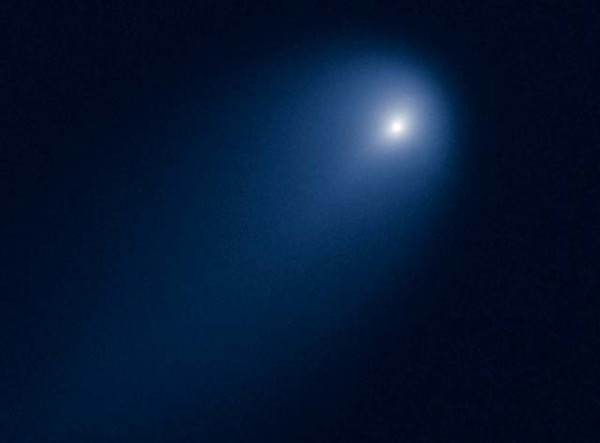
Comets mainly originate from two major reservoirs located at the outer reaches of the Solar System: the Kuiper Belt and the Oort Cloud. Their origin and evolution are linked to the gravitational dynamics of the primordial Solar System and the distribution of ices in the cold regions.
The Kuiper Belt is a disc-shaped region beyond Neptune's orbit, between 30 and 50 astronomical units (AU) from the Sun. It contains billions of small icy bodies.
The Oort Cloud is a hypothetical gravitational sphere that surrounds the Solar System up to a distance of about 100,000 AU. It is believed to consist of several billion small icy bodies.
On September 21, 2012, two amateur astronomers, Artyom Novichonok (Russia) and Vitali Nevski (Belarus), discovered an exceptionally bright object using the telescope of the International Scientific Optical Network (ISON) near Kislovodsk. This comet, officially cataloged as C/2012 S1 (ISON), immediately sparked the interest of the scientific community: its highly elliptical trajectory suggested it was a new dynamic comet from the Oort Cloud, heading towards the Sun for the first time.
Comet ISON followed a highly eccentric orbit (e ≈ 1), typical of long-period comets originating from the Oort Cloud. Its perihelion passage was expected on November 28, 2013, at a distance of about 1.16 million kilometers from the Sun's surface (or 0.0124 AU). It was expected to graze the Sun at a very high speed (about 377 km/s), while undergoing extreme heating that could vaporize a large portion of its volatile ices, potentially releasing a spectacular coma.
From a physical standpoint, initial observations estimated the comet's nucleus to be between 1 and 2 km in diameter. The volatile compounds it released (water, carbon dioxide, dust) under early insolation seemed particularly abundant, reinforcing the hypothesis of a spectacular brightness surge as it approached the Sun.
Upon its discovery, some astronomers dubbed ISON the "comet of the century." Orbital projections indicated it could become as bright as, or even brighter than, the full Moon, and potentially visible during the day, an extremely rare phenomenon. Enthusiasm spread rapidly, fueled by historical precedents such as comets Ikeya-Seki (1965) and Hale-Bopp (1997).
Hopes were high as its visibility was expected to extend for several weeks in the fall of 2013, for observers in both the Northern and Southern Hemispheres. For scientists, ISON also offered a unique opportunity to study the primitive composition of an Oort Cloud object, relatively unaltered since the formation of the Solar System.
Unfortunately, as it approached perihelion in late November 2013, Comet ISON was disintegrated by the Sun's intense heat. Images captured by the SOHO and STEREO probes showed a progressive fading of its nucleus, leaving only a diffuse trail. The event indeed attracted global attention, but the anticipated visual spectacle from Earth never materialized.
Despite its disintegration, Comet ISON provided a valuable opportunity to test thermal and dynamic models of cometary nuclei. It also served as a testbed for solar observation instruments and collaborations between professionals and amateurs worldwide.